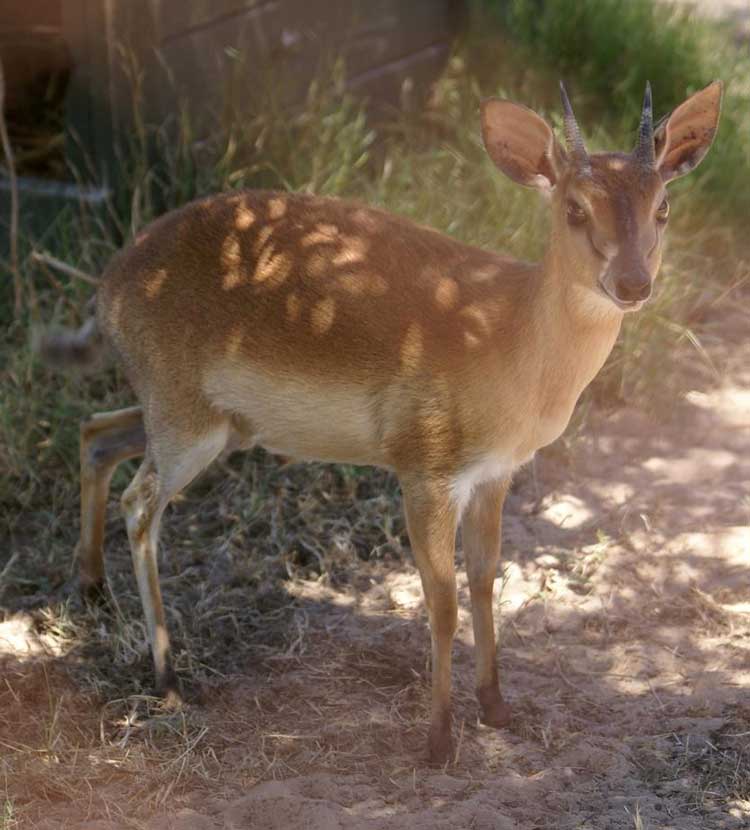Neotragus moschatus (*) Cladus: Eukaryota Name Neotragus moschatus (Von Dueben, 1846) References * Neotragus moschatus on Mammal Species of the World. Vernacular names -------------- Suni (Neotragus moschatus) is a very small species of antelope. It occurs in south-east Africa in dense underbrush. Suni are around 12-17 inches (30-43 cm) high at the shoulder and weigh 10-12 pounds (4.5-5.4 kg). They are usually reddish brown, darker on their back than their sides and legs. The belly, chin, throat and insides of legs are white. The nostrils are prominent red, and there are black rings around the eyes and above the hooves. Males have horns 3-5 inches (8-13 cm) long, that are ridged most of their length and curve backwards close to their heads. Females do not have horns. Suni can make weak barking and whistling sounds. Suni feed on leaves, fungi, fruits and flowers, and need almost no free water. They are shy, most active at night, and sleep during the day in a shady, sheltered area. They are social but males defend a territory of about 3 hectares. They scent-mark the boundaries with secretions from their preorbital glands. There may be an individual or communal dung pile on the periphery of the territory. A male usually takes one mate, but other females may share his territory. A single calf is born weighing about two pounds, after a gestation of 183 days. Lions, birds of prey, snakes, and other meat-eaters prey on suni. For protection, they are well camouflaged in dry grass and keep very still. When a predator is almost on top of them, they spring out and bound away into the underbrush.
1. ^ IUCN SSC Antelope Specialist Group (2008). Nesotragus moschatus. In: IUCN 2008. IUCN Red List of Threatened Species. Downloaded on 13 November 2008.Database entry includes justification for why this species is listed as Least Concern.
Source: Wikispecies, Wikipedia: All text is available under the terms of the GNU Free Documentation License |
|


